Abstract
Brief exposure of etiolated maize seedlings to light induces large increases in adenylate kinase and inorganic pyrophosphatase activity of the leaf in the following 48 hr in the dark. Red light is more effective than white or far red light, and far red reverses the effect of red light, indicating phytochrome control. Out of several tested, only these 2 enzymes appear to be coordinately induced, which is consistant with their close functional relationship. For inorganic pyrophosphatase, light treatment induces biosynthesis of a distinctive form of the enzyme characteristic of chloroplasts, readily separable from the enzyme characteristic of etiolated tissue.
Full text
PDF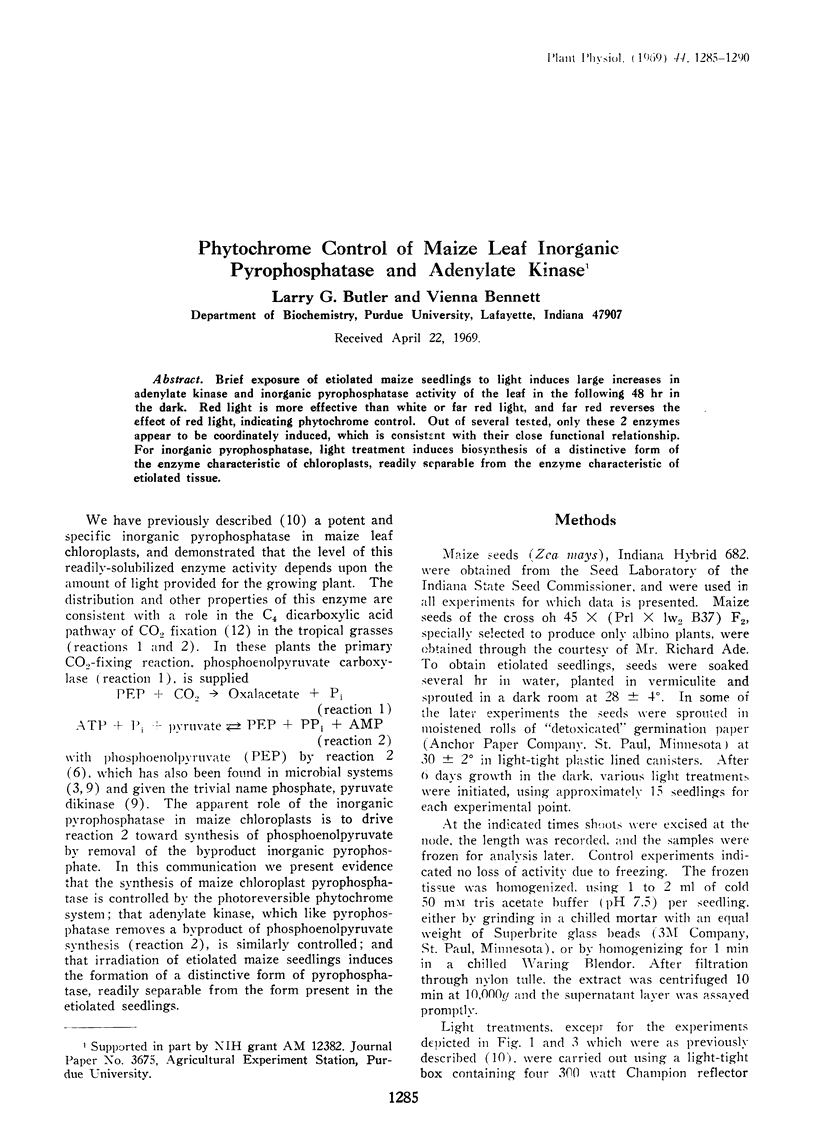
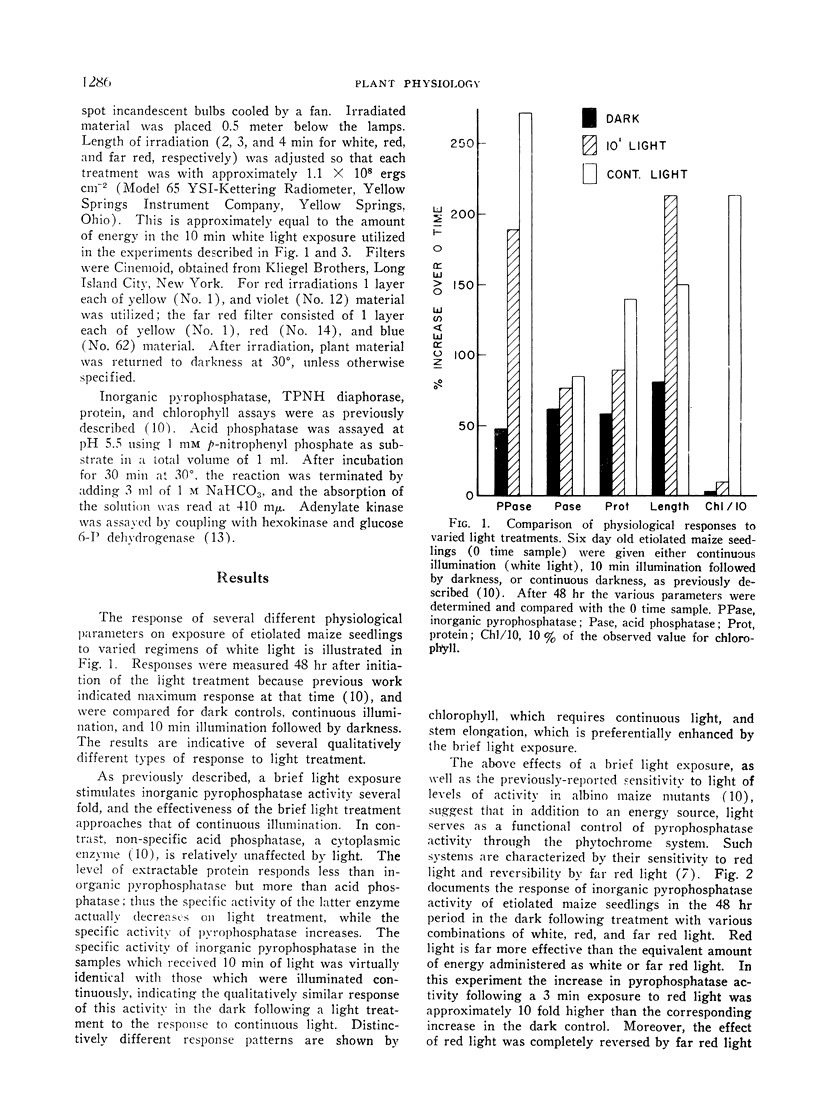
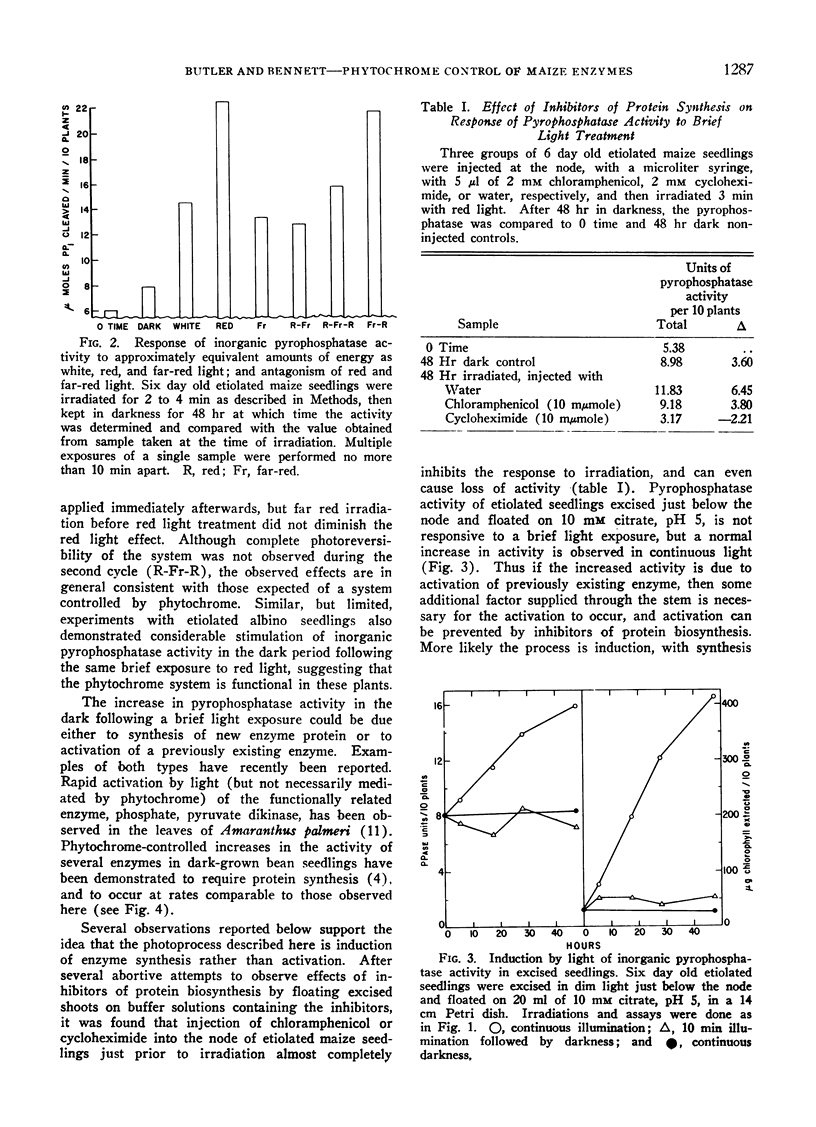
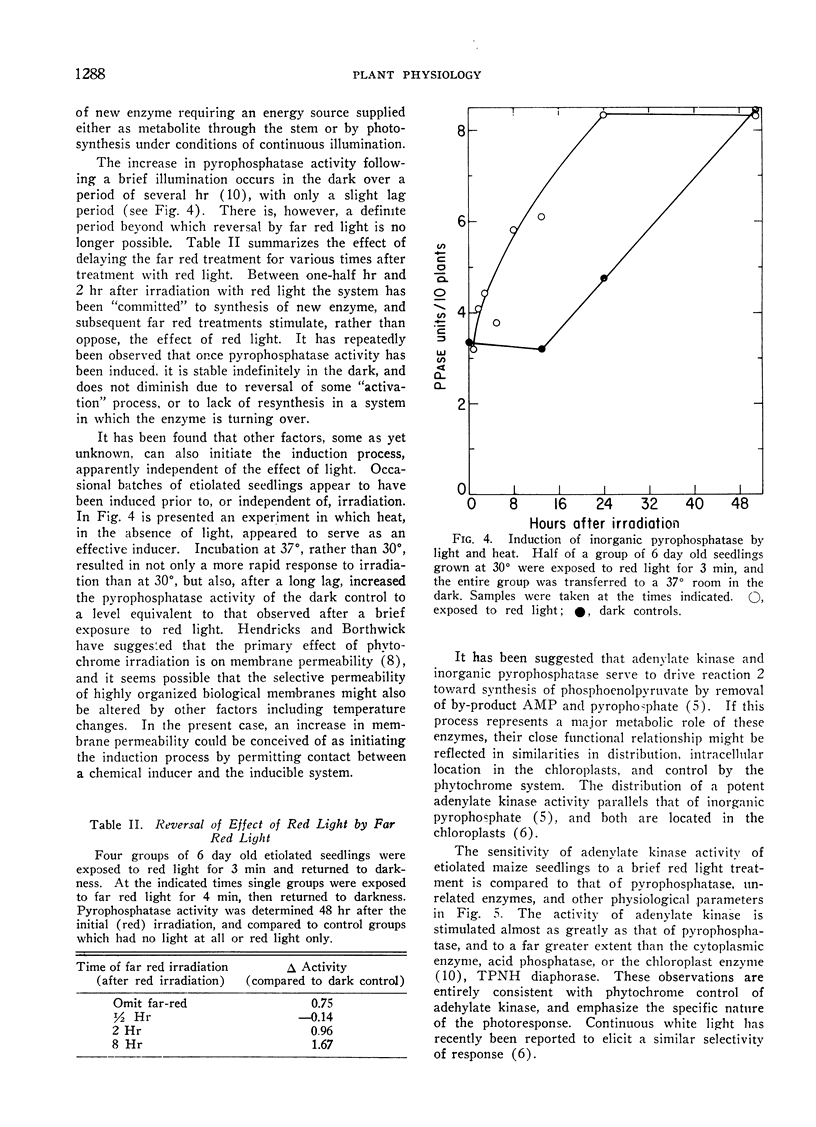

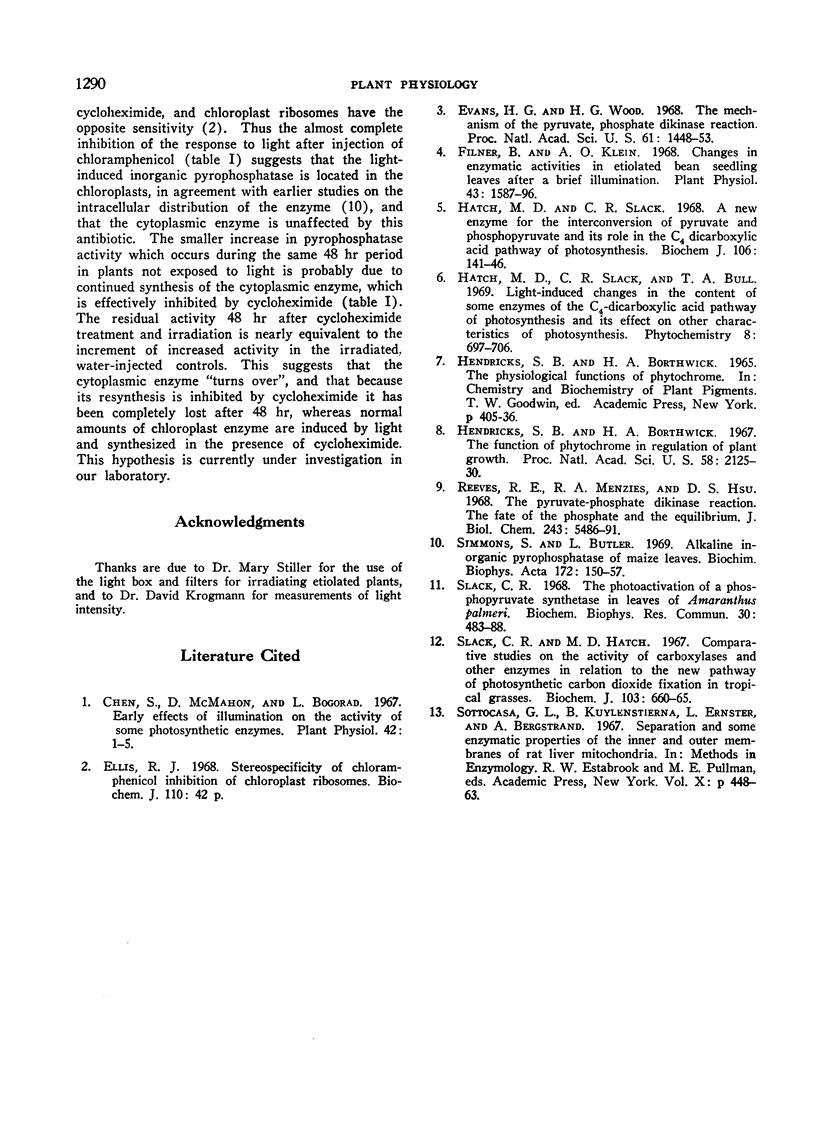
Selected References
These references are in PubMed. This may not be the complete list of references from this article.
- Chen S., McMahon D., Bogorad L. Early effects of illumination on the activity of some photosynthetic enzymes. Plant Physiol. 1967 Jan;42(1):1–5. doi: 10.1104/pp.42.1.1. [DOI] [PMC free article] [PubMed] [Google Scholar]
- Evans H. J., Wood H. G. The mechanism of the pyruvate, phosphate dikinase reaction. Proc Natl Acad Sci U S A. 1968 Dec;61(4):1448–1453. doi: 10.1073/pnas.61.4.1448. [DOI] [PMC free article] [PubMed] [Google Scholar]
- Filner B., Klein A. O. Changes in enzymatic activities in etiolated bean seedling leaves after a brief illumination. Plant Physiol. 1968 Oct;43(10):1587–1596. doi: 10.1104/pp.43.10.1587. [DOI] [PMC free article] [PubMed] [Google Scholar]
- Hatch M. D., Slack C. R. A new enzyme for the interconversion of pyruvate and phosphopyruvate and its role in the C4 dicarboxylic acid pathway of photosynthesis. Biochem J. 1968 Jan;106(1):141–146. doi: 10.1042/bj1060141. [DOI] [PMC free article] [PubMed] [Google Scholar]
- Hendricks S. B., Borthwick H. A. The function of phytochrome in regulation of plant growth. Proc Natl Acad Sci U S A. 1967 Nov;58(5):2125–2130. doi: 10.1073/pnas.58.5.2125. [DOI] [PMC free article] [PubMed] [Google Scholar]
- Reeves R. E., Menzies R. A., Hsu D. S. The pyruvate-phosphate dikinase reaction. The fate of phosphate and the equilibrium. J Biol Chem. 1968 Oct 25;243(20):5486–5491. [PubMed] [Google Scholar]
- Simmons S., Butler L. G. Alkaline inorganic pyrophosphatase of maize leaves. Biochim Biophys Acta. 1969 Jan 14;172(1):150–157. doi: 10.1016/0005-2728(69)90100-5. [DOI] [PubMed] [Google Scholar]
- Slack C. R., Hatch M. D. Comparative studies on the activity of carboxylases and other enzymes in relation to the new pathway of photosynthetic carbon dioxide fixation in tropical grasses. Biochem J. 1967 Jun;103(3):660–665. doi: 10.1042/bj1030660. [DOI] [PMC free article] [PubMed] [Google Scholar]
- Slack C. R. The photoactivation of a phosphopyruvate synthase in leaves of Amaranthus palmeri. Biochem Biophys Res Commun. 1968 Mar 12;30(5):483–488. doi: 10.1016/0006-291x(68)90077-6. [DOI] [PubMed] [Google Scholar]


